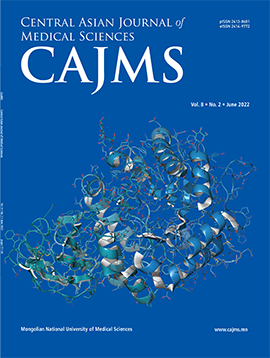Metabolomics Study of Amenorrhea After the Administration of Shimshin-6 Traditional Prescription in Rats Using the Ultra High Performance Liquid Chromatography Coupled with Time of Flight Mass Spectrometry
DOI:
https://doi.org/10.24079/cajms.2021.03.011Keywords:
Shimshin-6, Amenorrhea, Rheum Undulatum L, Hippophae Rhamnoides LAbstract
Objectives: The objective of this study is to determine metabolomics changes in the blood of amenorrhea model rats treated with Shimshin-6, a traditional Mongolian medicine, and search the important biomarkers using the UHPLC/TOF MS platform. Methods: The influence of a traditional Mongolian Shimshin-6 preparation administered to rats with a dexamethasone induced amenorrhea model was assessed to evaluate the physiological changes and the drug's metabolites in biological samples. The metabolites responsible for the differentiation of metabolic profiles between the two groups were obtained based on a multivariate statistics variable importance in the projection (VIP) threshold of 1.0 from the PLS-DA model. The analyses were carried out using an UHPLC-TOF-MS platform. One-way analysis of variance (ANOVA) was applied to test the significance of differences between groups. Results: The metabolic pathways were identified through the online databases Metlin and HMDB. Metabolic pathways analysis found tryptophan metabolism, phenylalanine metabolism, D-Glutamine and D-glutamate metabolism, Sphingolipid metabolism, Ubiquinone and other terpenoid-quinone biosynthesis and Fatty acid biosynthesis were mainly enriched based on the differential metabolites in rats of AG. Some of these pathways were markedly altered, such as the Tryptophan metabolism and phenylalanine metabolism pathway. Conclusions: A variety of potential biomarkers of Shimshin-6 physiological activity have been identified in the tested samples. According to the results it could be clearly seen, that the administration of this traditional medication affected the metabolism of amino acids, fatty acids and energy, to improve the condition of the animals suffering from amenorrhea.
Downloads
252
Downloads
Published
How to Cite
Issue
Section
License
Copyright (c) 2021 Mongolian National University of Medical Sciences

This work is licensed under a Creative Commons Attribution-NonCommercial 4.0 International License.




